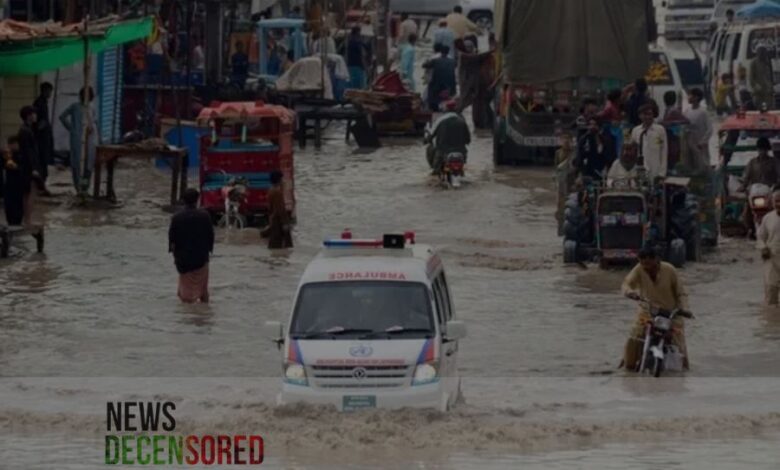Heavy Rainfall Claims 144 Lives in Pakistan, Wettest April since 1961

Pakistan’s weather patterns are sending mixed signals, with the country experiencing its wettest April in over 60 years, according to the Pakistan Meteorological Department (PMD). This starkly contrasts the heat waves and severe air pollution plaguing other parts of the country.
The data paints a concerning picture: April rainfall reached 59.3mm (2.3 inches), more than double the usual average of 22.5mm (0.9 inches). This “excessively above normal” precipitation, as the PMD described it, was particularly severe in the southwestern province of Balochistan, which received a staggering 437% more rain than usual.
Tragically, this extreme weather event came at a cost. At least 144 people lost their lives in thunderstorms and house collapses caused by the heavy rains. The worst hit was the northwestern province of Khyber Pakhtunkhwa, where 84 people died, including 38 children. Additionally, over 3,500 homes were damaged.
While these heavy rains brought devastation, much of Asia sweltered under scorching heat waves. Interestingly, Pakistan’s national average temperature for April remained lower than usual, at 23.67°C (74.6°F) compared to the historical average of 24.54°C (76.18°F).
Experts point to a worrying trend: climate change’s influence on Pakistan’s erratic weather patterns. “Climate change is a major factor influencing the erratic weather patterns in our region,” stated Zaheer Ahmad Babar, spokesperson for the PMD.
This isn’t the first time Pakistan has faced the brunt of extreme weather. Devastating floods in 2022 submerged a third of the country, tragically claiming 1,739 lives and causing an estimated $30 billion in damages. During that disastrous event, Balochistan and Karachi received a staggering 590% and 726% more rain than usual.
The United Nations Office for the Coordination of Humanitarian Affairs (OCHA) highlighted the devastating impact of these floods on agricultural production. “The flash floods caused extensive damage to vast areas of crops, particularly the wheat crop, which was ready for harvest,” their recent report stated. “This has resulted in significant economic losses for local farmers and communities, compounding the losses from the rain-related incidents.“
Pakistan’s challenges are broader than heavy rains. Parts of the country also grapple with heatwaves and severe air pollution. Environmental experts blame inadequate infrastructure and ineffective governance for exacerbating these issues.
“We are witnessing climate change-related incidents nearly every year now. Yet we are not prepared for it,” remarked Ahmad Rafay Alam, an environmental lawyer and activist, to AFP news agency. “It is the responsibility of our provincial and federal governments to prioritize climate relief and mitigation measures. However, they focus primarily on political matters,” he added.
Pakistan’s situation is a stark reminder of the challenges posed by climate change. The country’s erratic weather patterns, ranging from devastating floods to heatwaves and air pollution, highlight the urgent need for adaptation strategies and investment in infrastructure to cope with a changing climate. Addressing these issues requires government action and a collective effort towards sustainable practices and climate-resilient development.




